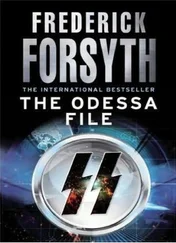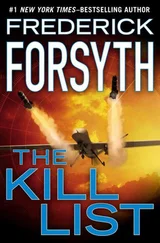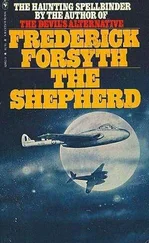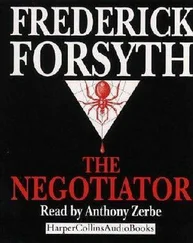Frederic Forsyth - The Cobra
Здесь есть возможность читать онлайн «Frederic Forsyth - The Cobra» весь текст электронной книги совершенно бесплатно (целиком полную версию без сокращений). В некоторых случаях можно слушать аудио, скачать через торрент в формате fb2 и присутствует краткое содержание. Жанр: Триллер, на английском языке. Описание произведения, (предисловие) а так же отзывы посетителей доступны на портале библиотеки ЛибКат.
- Название:The Cobra
- Автор:
- Жанр:
- Год:неизвестен
- ISBN:нет данных
- Рейтинг книги:5 / 5. Голосов: 1
-
Избранное:Добавить в избранное
- Отзывы:
-
Ваша оценка:
- 100
- 1
- 2
- 3
- 4
- 5
The Cobra: краткое содержание, описание и аннотация
Предлагаем к чтению аннотацию, описание, краткое содержание или предисловие (зависит от того, что написал сам автор книги «The Cobra»). Если вы не нашли необходимую информацию о книге — напишите в комментариях, мы постараемся отыскать её.
The Cobra — читать онлайн бесплатно полную книгу (весь текст) целиком
Ниже представлен текст книги, разбитый по страницам. Система сохранения места последней прочитанной страницы, позволяет с удобством читать онлайн бесплатно книгу «The Cobra», без необходимости каждый раз заново искать на чём Вы остановились. Поставьте закладку, и сможете в любой момент перейти на страницу, на которой закончили чтение.
Интервал:
Закладка:
"Give me the exact map reference. Degree minute, second, north of the equator, west of Greenwich."
Dexter gave him the name of the ship, description, flag she would be flying and the map reference, adjusted for six hours' cruising due west.
"Can you do it?" insisted Dexter. "No navigator, no radio guidance, no direction finder. Maximum range. Can you do it?"
For the first time, he seemed to have affronted the Brazilian.
"Senhor, I have my plane, I have my GPS, I have my eyes, I have the sun. I am a flier. It is what I do."
And the phone went down.
CHAPTER 17
IT TOOK HALF AN HOUR FROM THE MOMENT MAJOR JOAO Mendoza clicked off his cell phone until he felt the surge of power from the last two RATO rockets in the stores, and the old Buccaneer hurled herself into the sky for her last mission.
Mendoza had no intention of skimping his preparations so that his target could cover a few less miles of sea. He had watched as his British ground crew tanked the Bucc to her full 23,000 pounds of fuel, giving him around 2,200 nautical miles airborne.
The cannon had been loaded with one hundred percent armor-piercing shells. There would be no need of a tracer in the daylight or incendiary to start a fire. The target was steel.
The major worked on his maps, plotting height and speed, track and time to target the old-fashioned way, with map and Dalton computer. The map, folded into oblong sheets, he would strap to his right thigh.
By chance, Fogo Island lies almost exactly on the 15th parallel of latitude, and so does Barbados. The course would be due west, then down the degree heading 270. He had an exact map reference for the position of his target when it was given to the American two hours earlier. In four hours' time, his GPS display would give his own position with the same exactitude. What he had to do was adjust that to account for six hours' cruising by the target, descend to low level and go hunting with his last few pounds of fuel. And then make Bridgetown, Barbados, on little more than vapor. Easy.
He packed his few valuables, with a passport and some dollars, into a small tote bag and stuffed it between his feet. He bade farewell to the ground team, embracing each embarrassed Englishman in turn.
When the "assist" rockets cut in, he felt the usual mule-kick surge, held the control steady until the blue, foam-fringed waves were almost under him, then eased back and flew.
Within minutes he was on the 15th parallel, nose due west, climbing to operational 35,000 feet and setting power to maximum range with lowest consumption. Once at altitude, he set his speed at.8 Mach and watched the GPA ticking away the disappearing miles.
There are no landmarks between Fogo and Barbados. The Brazilian ace looked down at fluffy white altocumulus far below, and between the puffs of cloud, the deep blue of the Atlantic.
After three hours, he calculated he was slightly behind where he had hoped to be and realized he had a stronger-than-foreseen headwind. When his GPS told him he was two hundred miles behind the target and gave its presumed position, he eased off some of the power and began to drop toward the ocean. He wanted to be at 500 feet ten miles behind the Hae Shin.
At 1,000 feet, he leveled, and dropped his speed and power setting to maximum endurance. Speed was no longer the option; he needed time to search because the sea was empty, and, because of the headwind, he had used more fuel than he had hoped. Then he saw a small tramp steamer. She was off to his port, sixty sea miles short of Barbados. He dropped his wing, lowered the nose and began a sweep past her stern to see her name and flag.
At 100 feet, running at three hundred knots, he saw the flag first. He did not recognize it. Had he known, it was the convenience flag of Bonaire in the Dutch Antilles. There were faces staring up at the black apparition howling past the stern. He noted a deck cargo of timber, then the name. Prins Willem. She was a Dutchman with deal planks for Curacao. He pulled back up to 1,000 feet and checked fuel. Not good.
His position, revealed by his Garmin GPS system, almost exactly blended onto the map reference of the Hae Shin as she had been six hours earlier. Other than the Dutchman off to one side, he could see no tramp steamer. She could have diverted from track. He could not raise the American sitting chewing his nails in Nassau to ask. He gambled the cocaine carrier was still ahead of him and powered along compass heading 270°. And he was right.
Unlike the jet at 35,000 feet with a headwind, the Hae Shin had had a following sea and was making twelve knots, not ten. He found her thirty miles short of the Caribbean holiday resort. A sweep past her stern showed him the two teardrops, red and blue, of the South Korean flag, and her new name, Sea Spirit. Again, small figures ran onto the hatch covers to stare up.
Major Mendoza had no desire to kill the crew. He elected to rip apart her prow and her stern. Pulling away, he took the Buccaneer up and out in a wide circle to approach the target from the side. He flicked his cannon from Safe to Fire, turned and dropped the nose into the bombing run. He had no bombs, but his cannon would have to do.
Back in the late 1950s, the Royal Navy had wanted a new, jet-powered low-level naval bomber to take on the menace of the USSR's Sverdlov-class cruisers. The job went out to tender, depending on acceptance of the submitted design. The Blackburn Aircraft Company offered the Buccaneer, and a limited order was placed. She first flew in 1962, almost as a stopgap warplane. She was still combat flying against Saddam Hussein in 1991, but over land for the Royal Air Force.
At the time of her birth, the Blackburn Company was on short commons, reduced to making metal bread bins. With hindsight, the Bucc was a product of near genius. She was never pretty; but she was tough and adaptable. And reliable, with two Rolls-Royce Spey engines that never failed.
For months, Major Mendoza had used her as a midair interceptor, knocking seventeen cocaine carriers out of the sky and sending twenty tons of the white powder to the ocean floor. But when Mendoza turned onto his low, sea-skimming attack run, the veteran Bucc reverted to what she had always been. She was a ship killer.
At eight hundred yards, he jammed his thumb on the Fire button and watched a raking line of 30mm AP cannon shells stream toward the bow of the Hae Shin. Before he lifted his thumb, hauled back and howled over the tramp steamer, he had seen the shells tear out her bow.
The tramp stopped dead in the water as she ran into a wall of ocean thundering into her forward holds. Then small figures were running for the lifeboat, ripping off the canvas cover. The Buccaneer rose and turned in another long arc as the pilot gazed out through the top of his canopy at the victim below.
The second strike was from the stern. Major Mendoza hoped the engineer had got out of the engine room; it was right in his sights. The second stream of cannon shells tore open the stern, taking rudder, propellers, two prop shafts and the engine and turning them into scrap.
The figures on deck had the lifeboat in the sea and were tumbling into it. Circling at 3,000 feet, the flier could see the Hae Shin was sinking by both stem and stern. Certain that she was gone and that the Prins Willem would pick up the crew, Major Mendoza turned for Barbados. Then the first of his Speys, having flown on vapor for the second run, flamed out.
A glance at the fuel gauges revealed the second engine was also running on vapor. He used his last few pounds of gas to climb, and when the second Spey died he had clawed the Bucc up to 8,000 feet. The silence, as always after a flameout, was eerie. He could see the island ahead of him, but out of reach. No glide was ever going to be stretched that far.
Читать дальшеИнтервал:
Закладка:
Похожие книги на «The Cobra»
Представляем Вашему вниманию похожие книги на «The Cobra» списком для выбора. Мы отобрали схожую по названию и смыслу литературу в надежде предоставить читателям больше вариантов отыскать новые, интересные, ещё непрочитанные произведения.
Обсуждение, отзывы о книге «The Cobra» и просто собственные мнения читателей. Оставьте ваши комментарии, напишите, что Вы думаете о произведении, его смысле или главных героях. Укажите что конкретно понравилось, а что нет, и почему Вы так считаете.










